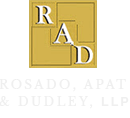The threat of moving parts
With machines, most of the danger revolves around the moving parts. The way injuries happen may be different — a person’s hair getting caught in a spinning wheel, for instance, or a person’s hand being crushed by two flat plates moving against one another — but they often come back to the threat of working around machines with moving parts.
The first basic area that the Occupational Safety and Health Administration recommends safeguarding is known as the “point of operation.” This is simply the area where a worker will be located and using the machine, whether it’s being used for cutting, drilling, molding or anything else.
The next area to safeguard is where energy is transmitted through or to the machine. When many people think of the transmission of power, they think more about fuel or electricity, and there are potential dangers in these areas, but this refers more to the transmission of energy from one part to the next. For example, belts, pulleys, cranks and gears can all work to move the energy that enters the machine to the solid components — like a platform or a drill bit — that are doing the work.
OSHA also simply warns about looking for any moving parts outside of these areas, such as on the auxiliary systems and feed mechanisms. The key is for employees to always be aware of moving parts and to work carefully around them, helping to prevent accidents.
Get Serious Representation For Unsafe Working Conditions
While awareness is very important, it is not going to prevent all accidents from happening. Other factors, such as pressure to do a job quickly or unsafe working conditions created by the employer, can factor in. Those who are hurt in these industrial accidents may be able to seek compensation in New York.
Source: Occupational Safety & Health Administration, “Chapter 1 – Basics of Machine Safeguarding,” accessed Sep. 06, 2016









